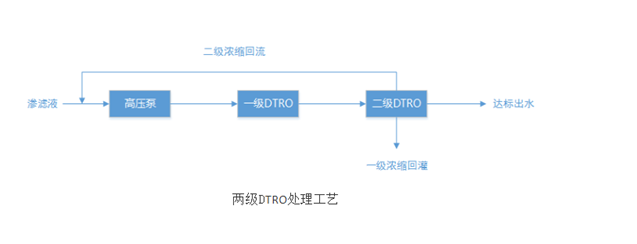At present, landfill is the most widely adopted garbage disposal method in the world. Such a large amount of landfill will produce a large number of secondary pollutants -- landfill leachate. Landfill leachate is a kind of high concentration organic wastewater, its water quality composition is more complex, such as high concentration of BOD5 and COD, high metal content, large variation of water quality and quantity, high content of ammonia nitrogen, and imbalance of microbial nutrient elements.
With the rapid development of urbanization in China, the problem of waste disposal has attracted more and more attention. Landfill leachate, as a waste water produced in the process of garbage treatment, has seriously affected the living environment of the city, and has become a difficult point in garbage treatment at present. In order to solve this difficulty, it is necessary to apply the right remedy to the case, analyze the causes and characteristics of the difficulties first, and then select the appropriate treatment methods to solve. The following are some common landfill leachate treatment methods:
(1) Biological treatment + membrane treatment process
Ø process: preprocessing to microbial treatment, adsorption filtration membrane
Ø typical process: medium temperature anaerobic + MBR + RO system
Ø technology content: leachate by adjusting the temperature in the pool into YanYangChi, via macromolecular organic pollutants degradation after the anoxic period of MBR reactor, and mixed reflux water into aerobic aeration MBR, remove the TN in the leachate, aerobic pond water into MBR separator, thick liquid separation of sludge reflux to the MBR hypoxia, the MBR effluent into the reverse osmosis system, leachate after reverse osmosis treatment to achieve national standards.

After the application of the market, it is found that the immersion MBR has more advantages than the external tube membrane. At present, through the implementation of different leachate projects, the immersion MBR system, only PTFE material ultrafiltration membrane can treat the landfill leachate. PTFE film has the following advantages :(1) excellent chemical resistance, pH range (2) hydrophilic, excellent pollution resistance (3) high porosity (Max90%), high flow (4) resistance to high tensile strength of more than 80N. At the same time, the MBR process is optimized and the membrane pool is set independently with the biochemical system. In addition to avoiding the defects of the previous immersed MBR system such as serious wire broken, short service life, frequent cleaning and troublesome maintenance, the energy consumption is greatly reduced, and the system stability is also greatly improved.
(2) Low consumption evaporation + ion exchange process
Ø process: prefiltering - steam compression separation water - absorbing gas
Ø craft: typical MVC evaporation + DI ion exchange
Ø technology content: garbage landfill site leachate regulating pool filter online recoil, despite the SS, fiber of leachate, improve the efficiency of removing, then through the MVC compression principle of evaporation, the leachate pollutants in separating from the water, water quality purification effect. The ammonia in distilled water was removed by special resin, and the water quality was discharged to the full standard. In the process of MVC evaporation, the volatile gas ammonia is discharged, and the DI system is used to absorb the residual hydrochloric acid gas in the leachate.

(3) Full membrane adsorption filtration process
Ø process: pretreatment and two-stage reverse osmosis membrane filtration
Ø typical process: two-stage DTRO reverse osmosis process
Ø process description: concentrate landfill leachate by adjusting pool after entering into the high pressure pump, through the cycle of high-pressure pump DTRO reverse osmosis membrane filtration into the level, after the water into the secondary DTRO reverse osmosis systems, the two-stage reverse osmosis filtered water discharging standard, circulation into the system for processing. The primary concentrated liquid was recycled into the landfill area for centralized treatment, and the secondary concentrated liquid was returned to the total water intake, with the total water production rate of the system at about 60%.

Landfill leachate is a kind of highly polluting organic wastewater with high concentration, which has caused great pollution to the surrounding environment, the bottom soil layer of the landfill site and the groundwater. The above are several common treatment methods of landfill leachate. Due to the complexity of the quality of leachate and the variability of the amount of water, there is no perfect treatment process at present, and most of them adopt targeted treatment process according to the specific situation and the economic and technical requirements.
Generally speaking, biological treatment is the main process of landfill leachate treatment, and the treatment of incineration plant leachate mainly focuses on membrane bioreactor, electrolysis and other methods. However, for the leachate of aged landfill sites, due to the greatly reduced biodegradability, direct biological treatment is difficult to achieve ideal removal effect. Therefore, biochemical treatment must be carried out on the basis of the pretreatment of the leachate, which can make full use of the advantages of biological methods and reduce the high operating cost brought by physical and chemical methods.